Oboes and bassoons are sensitive to the weather – especially changing humidity levels. We keep the average humidity at about 45% here in the shop year around. Two big humidifiers run 24/7 to achieve this. In New England in the winter, building interiors get dry. Even more so if you run a fireplace or use wood to heat your home. Without the humidifiers, we run at about 15%-20% humidity in the winter.
The metal ring on the bell of most oboes and some bassoons is a good way to test if your instrument is dry. If the ring moves (and it didn’t at some point in the past) then the wood has contracted and is dry. It’s telling you please humidiy me!
You can never humidify and be fine. You can over humidify and be fine. Players who live in a coastal community, or on a high desert are used to the effects of high and low humidity. For them though, the issue is not change, but consistent humidity issues. This article is focused on us players who experience changing levels of humidity and want to lessen the effect on our wooden instrument.
Cracks can occur due to low humidity. Double reed instruments vibrate better in moderate humidity. Keywork doesn’t change as the wood changes which sometimes causes problems.

1)I discovered this the hard way. In 1976 I was playing with an avant-garde ensemble in downtown Manhattan which used a basement space just off the Hudson river as rehearsal space. One night, after it had rained for a while, the place was so humid the walls were sweating and the floor was tacky with moisture. My 15 year old Loree (BI-37) was crack free until that night. I heard it crack. Sends shivers up your spine. The keywork was sticking like it was too tight. The wood had swelled, and the keywork was holding the expansion back. Crack.
2) I discovered this the hard way (again). I was performing with an orchestra on tour, and a few of the stops were in very dry locations. After a week on tour through desert, I heard that sound again. Crack. I had been blowing warm, humid air through a thoroughly dry instrument forcing the wood to change rapidly inside the bore, while the exterior stayed dry.
If you humidify the whole house (which is good for the people, too), then you’re ahead of the game. But if you travel to dry places like school, university, a pit orchestra, church, and other performance places, let my experience be a lesson.
Keeping your instrument evenly humidified is easier than ever. We offer a few items that will help out including humidity monitors which let you know the humidity level wherever you place them. I keep one of these in my case at all times now.
With one of these in my case, I feel like I have the information that helps me know what’s going on. I started using these in my oboe and bassoon cases years ago, and have found they last and are very accurate. I checked the oboe one with a fancier home system, and found they had virtually the same readings whether I tested indoors, outdoors or in the case.
Once you’re armed with information, you can take action. If you’re like most players, you’ll have low humidity in your case. I did some tests:
- A piece of lemon peel in the case. That smelled nice for a day or two, but really didn’t seem to make a difference
- A bit of sponge in a perforated plastic bag. That worked a bit too well the first day, and dried out in two days. I didn’t continue the test, but it seems logical that if I had left it in there, it would have started absorbing moisture, making the case even drier.
- I put my instrument away fairly wet. I cleaned it lightly with a feather and there was plenty of moisture left. This did nothing for the humidity.
- I did nothing and found that the case interior was even with the exterior humidity.
So, the old classics were a mixed lot at best.
Now I use the Humistat case humidifier. I can adjust how much humidity it causes, and the thing doesn’t spill water inside the case. It lasts for about 2 weeks before I have to refill it. If I don’t refill it, it just sits there inert in the case and doesn’t hurt anything (or get moldy, or suck in moisture!) You can get one of these on our website.
If you have another method to recommend – I’m all ears! This is just the one that works for me.

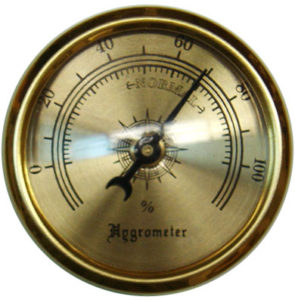


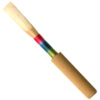
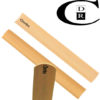

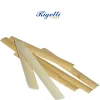
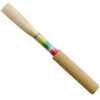
I am moving from New England to Florida. What precautions should I take to keep my bassoon safe from the weather?
Hi Adam,
Aside from the heat, the humidity will be a factor if you’re at all near a coast. The culprit to watch out for is rapid change. Going from a hot humid car to a cool air conditioned house or concert hall will put strain on the instrument and potentially allow condensation to build up in the wing joint and bocal. You can mitigate the effect with a good case. It will help make the changes less rapid.
When you get to the place you are going to play, give your instrument time to acclimate to the new temperature and humidity. Perhaps leave the case open and let the bassoon rest in the new environment for 10 minutes or more if you can.
Outdoor gigs are a real issue, especially in direct sunlight. Consider getting, borrowing, or renting a plastic or ‘beater’ instrument for outdoor gigs. If you have to perform at length outdoors, consider planning on getting your yearly maintenance work done right after the gig.
Good luck, safe travels, and happy bassooning!
[…] are highly sensitive to changes in humidity. Low humidity can cause wood instruments to shrink, leading to cracks or warping. A humidifier maintains optimal moisture levels, preventing these […]